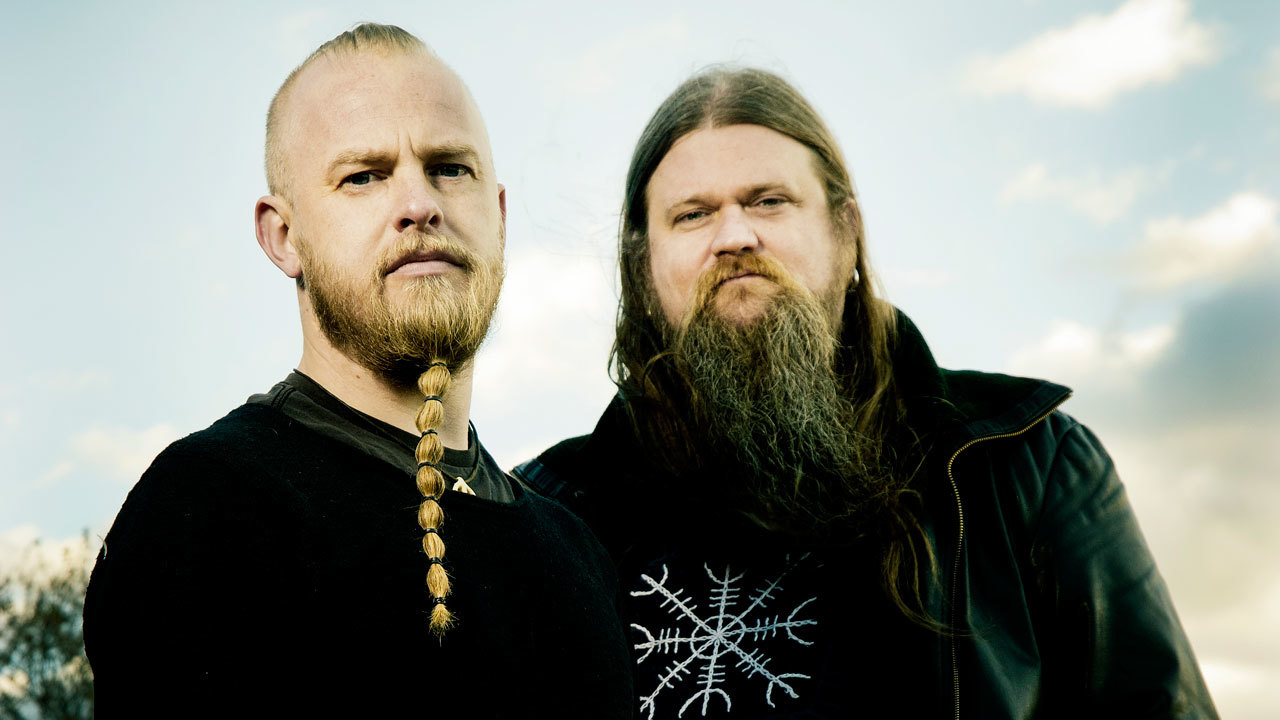As Prog sits down with Einar Selvik and Lindy-Fay Hella before their Norwegian musical project, Wardruna, play the first of two sold-out nights at London’s spectacular Union Chapel, we notice that the frontman and founder of the band is clutching a Yes mug. When the inevitable “Are Wardruna prog?” question is dropped, Selvik points at the mug with a cheeky grin before stating firmly: “Absolutely.”
Wardruna may not be on every prog fan’s radar, but they should be. The Norwegian band produce a primal yet beautiful blend of dark ambience and Norse folk with strong ties to the historical and natural world. Since their inception they have won over music fans of all genres, selling out shows far beyond their native land. Wardruna may have originally begun as a project to bring Norwegian history back to life, but over time they have become something deeper, something that, for many, is akin to a spiritual experience.
Selvik formed Wardruna in 2003 with a specific goal in mind. “I wanted to take old ideas, old techniques and old instruments, but made for a contemporary listener,” he muses, explaining how he’s long been a history nerd and Norwegian folk fan. And, in typical prog fashion, it was a concept that truly brought the band to life.
It took Wardruna eight whole years to release their first album, Runaljod – Gap Var Ginnunga, the first in a conceptual trilogy based entirely around Nordic runes. Second album Runaljod - Yggdrasil followed in 2013, and the final part of the trilogy, Runaljod – Ragnarok, was released in 2016. It’s taken a long time to come full circle, but that’s no wonder as the concept was so carefully crafted. Each song is based around one of the 24 runes in the Eldar Futhark, which is the oldest form of runic alphabets, dealing heavily with the natural world.
“Runes are one of my biggest passions,” Selvik explains. “I’ve studied them for over half my life. Each rune has a symbolic value and the goal is to interpret these symbols. But the runes don’t serve you with any truths: they leave you with more questions than answers. In retrospect, I knew it would be a difficult task to chew on.”
Selvik himself may be an expert in this field, but he makes it clear that even if you know zilch about runes, it won’t affect your connection to the music. Just ask Lindy-Fay Hella, who provides beautifully raw and powerful vocals to Wardruna that give the band a bewitching edge.
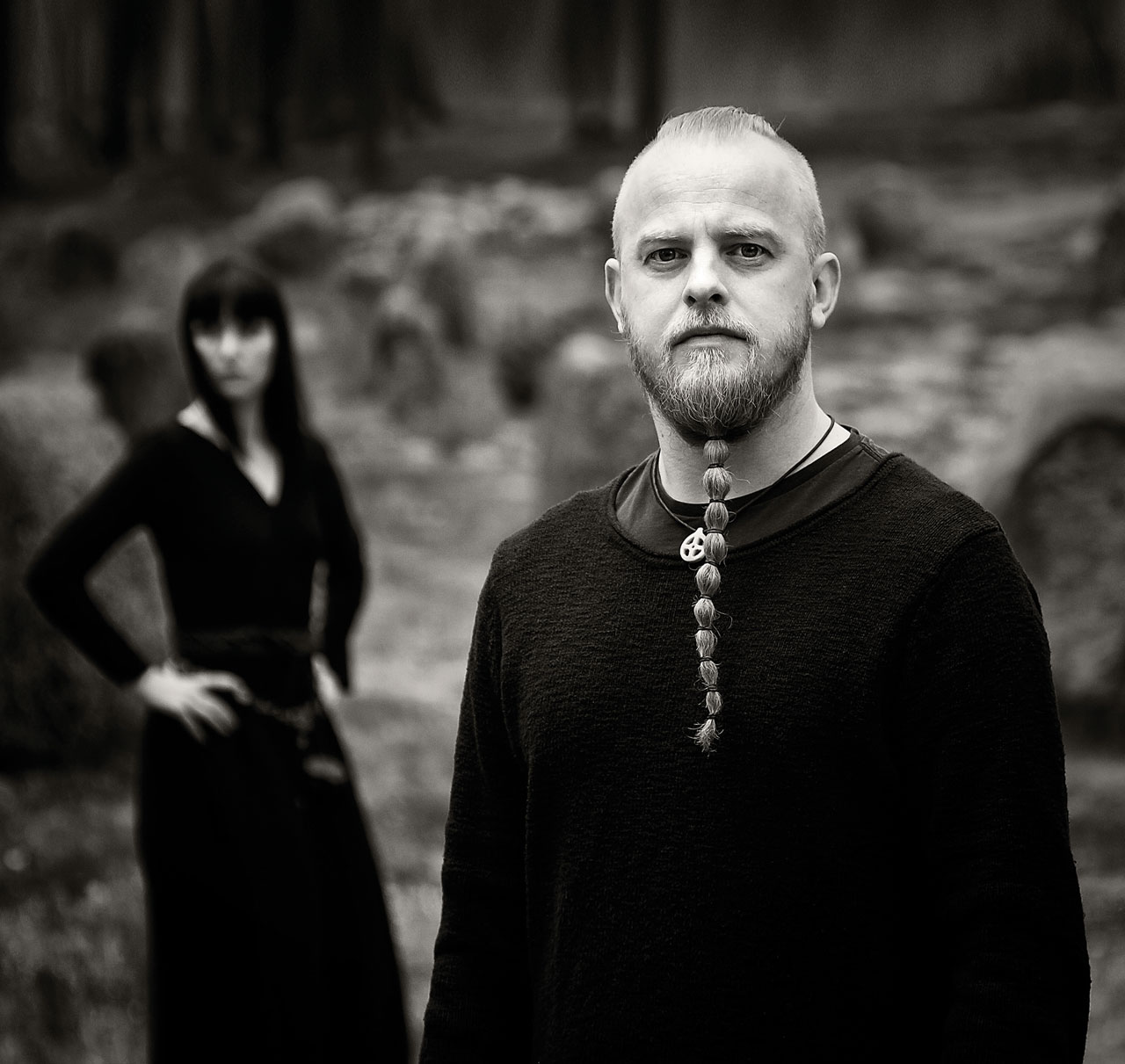
“I was always interested in history, but it was so boring in school!” she laughs, and Selvik nods in agreement. “I didn’t know anything about the runes [when I joined the band], so I didn’t pretend to know. But I made Wardruna into something I could relate to. I go with my feelings when I sing.”
Indeed, their popularity – which has led to a raft of sold-out shows and a devout following – isn’t a result of rune aficionados flocking to the fore. It’s because there’s something more, something deep within their music that resonates with the listener.
“I think one of the reasons why people connect to Wardruna is because there is room for you,” Selvik muses. “There is room for your own interpretation. It’s not us preaching. If you boil Wardruna down to essence, it’s about nature. I think when a lot of people hear the music, it’s a sort of remembrance that taps into the longing a lot of people in modern Western society have, which is that connection to nature. I think that’s one of the reasons why it has a therapeutic effect on them.”
While most bands would take a concept and run with it on paper, Wardruna’s connection and commitment run deeper. They don’t just talk the talk, they walk the walk…
“The creative concept behind Wardruna is to interpret each rune as much as possible,” Selvik explains. “This can mean recording in relevant places: sometimes outdoors, or on specific dates. For example, for the song for water, we recorded the vocals standing in the middle of a river.”
Sounds pleasant enough. But Selvik isn’t afraid to shy away from the harsher side of nature. Instead, he embraces it – whatever the cost.
“NaudiR, a song on the last record [Runaljod – Yggdrasil], means ‘need’. It’s not need as in want, it’s need as in, you either succumb to death, or you survive,” Selvik says. “For that song, I fasted for over two days and then went out into the mountains where it was snowing sideways. And I started to walk. I only stopped when it became really dangerous.”
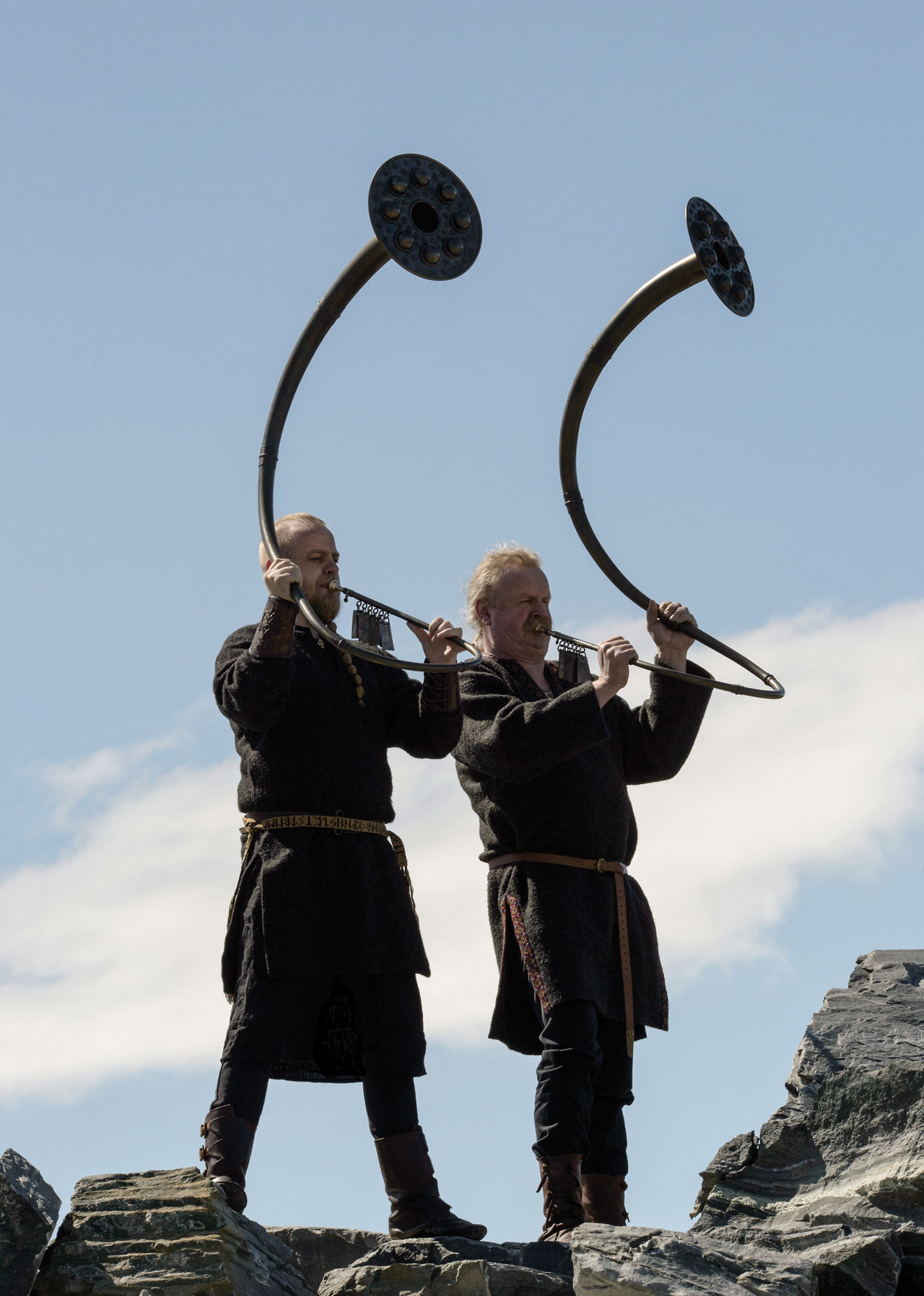
We’re glad he lived to tell the tale, but does such extreme preparation really benefit the music?
“Absolutely,” Selvik says. “There’s one song we have about the birch tree, and for that, we’re playing on birch trees in the forest. I could chop off a table leg and get the same sound probably, but I’m 100 per cent sure that added value is added value and whether it’s consciously or subconsciously, I’m convinced the listener will perceive the difference.”
Wardruna’s music is made magical not only by using natural elements like the aforementioned birch trees, water and stones, but because they’re determined to use genuine, traditional Nordic instruments. From primitive deer-hide frame drums to goat horns, Wardruna work hard to bring these instruments back to life.
“We use a wide array of ancient Nordic instruments that date back to the Stone Age, through the Bronze Age and then up into Viking Age, Iron Age and even Medieval Age,” explains Selvik. “Tonight you’ll see replicas of 3,000-year-old bronze horns, giant horns from the Bronze Age!
“But,” he adds with a smile, “with these instruments you either have to have somebody make them for you, or do it yourself. So I did both. It was a long process!”
How does one even begin work on making these instruments? As you may have guessed already, with Selvik, nothing was done by halves.
“It was a lot of work with going to museums, talking to archaeologists… it was a lot of research,” he says. “When we would make them ourselves, we did it the old way, with raw hides. And while I didn’t shoot the animal, I skinned it and put hides in a river for several weeks. Then you scrape it and prepare it in different ways. It’s a long process… and smelly! But what you’re actually doing in this meticulous way is bringing the animal back to life. And right there, you have added value.
“It’s taken 15 years to make these three records,” he says. “It’s been enormous amounts of work behind it all, but in many ways, you can say that it’s the runes that are the composer and we are the instruments.”
Though they have completed the trilogy of albums, Wardruna have no intention of hanging up their horns. “We’re just getting started,” says Selvik. “I feel like this [trilogy] was both a death and a rebirth. There are a lot of different ideas I had put in a drawer because we wanted to finish the runic project first.”
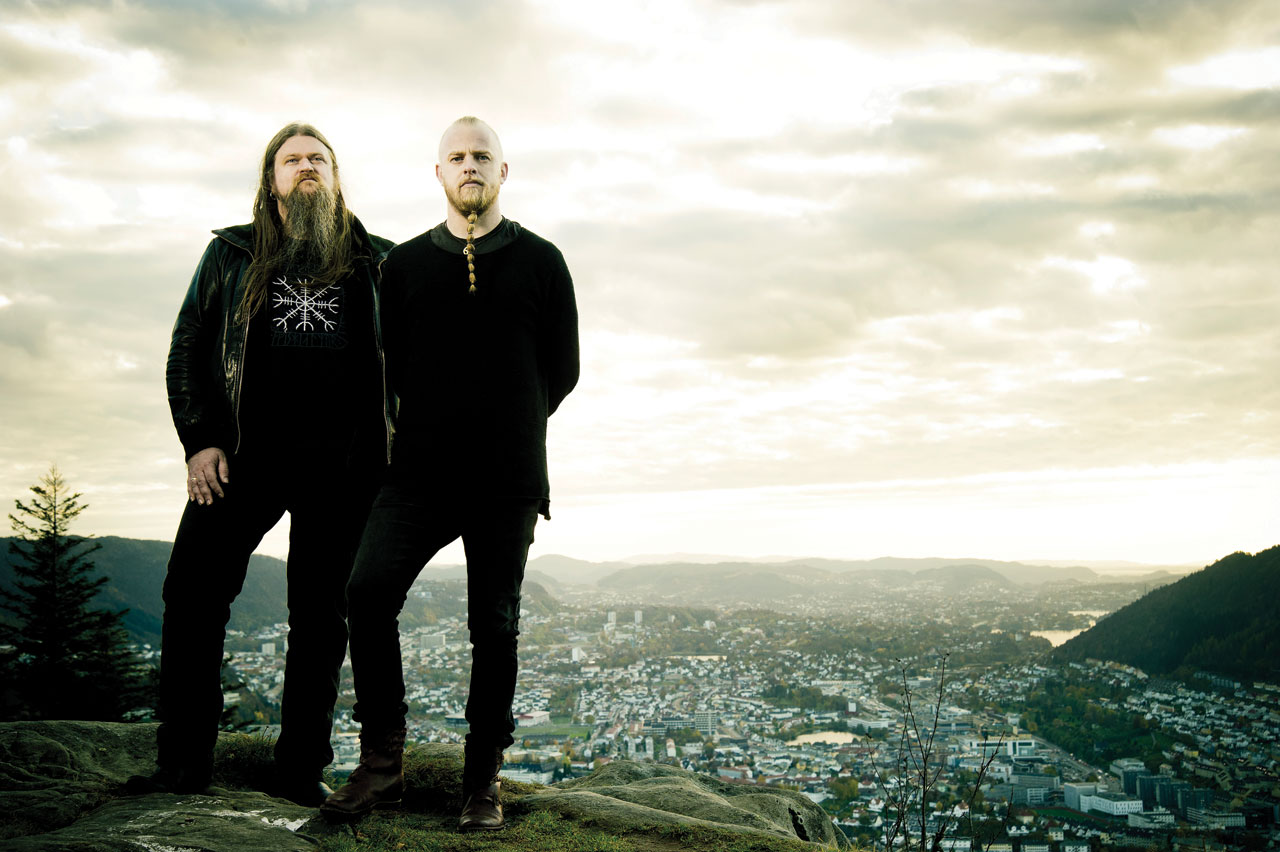
One project Selvik managed to cultivate alongside Wardruna is a prog-friendly venture: soundtrack work. For one show in particular, that’s a perfect fit: Vikings, a drama based around the sagas of Norse hero and real‑life Viking Ragnar Lothbrok.
“I really enjoy that format of working,” says Selvik of soundtrack work. “The genre of music has always been very experimental: finding the sound that underlines or enhances what’s happening on screen.”
But you won’t catch him ‘selling out’ to Hollywood just yet…
“I rarely compromise,” Selvik says. “It’s important to have that feeling or certainty that I know I can do a good job, or that something with this project resonates. I’ve had several offers to do films that I’ve turned down because I don’t feel it would be right for me.”
All of this sounds pretty prog to us. And, as it turns out, Wardruna are prog fans themselves. Selvik has collaborated with heavy proggers and fellow Norse men Enslaved for the project Skuggsjá, that blends the musical styles of both bands, and they released an album in 2016 that was reviewed in Prog 66. But he also loves the classics, namechecking King Crimson as a favourite, while Lindy points to the aforementioned Yes mug and nods her appreciation.
“If you listen to our song structures, they definitely don’t follow a normal tradition,” Selvik explains. “A lot of the time when I’d be sitting there listening to a song that I’d almost finished, I’d think: ‘I’ve never heard anything like this – is this too far out?’”
He laughs. “And I’d have to have someone else listen to it! But daring to let go of that control is definitely a progressive element.
“Progressive music is brave,” Selvik adds. “It’s about daring to let the song take you where the song wants to take you. And in that sense, Wardruna is, to the core, progressive.”
Who are we to argue with that?
Runaljod – Ragnarok is out now on By Norse Music. See www.wardruna.com for more info.
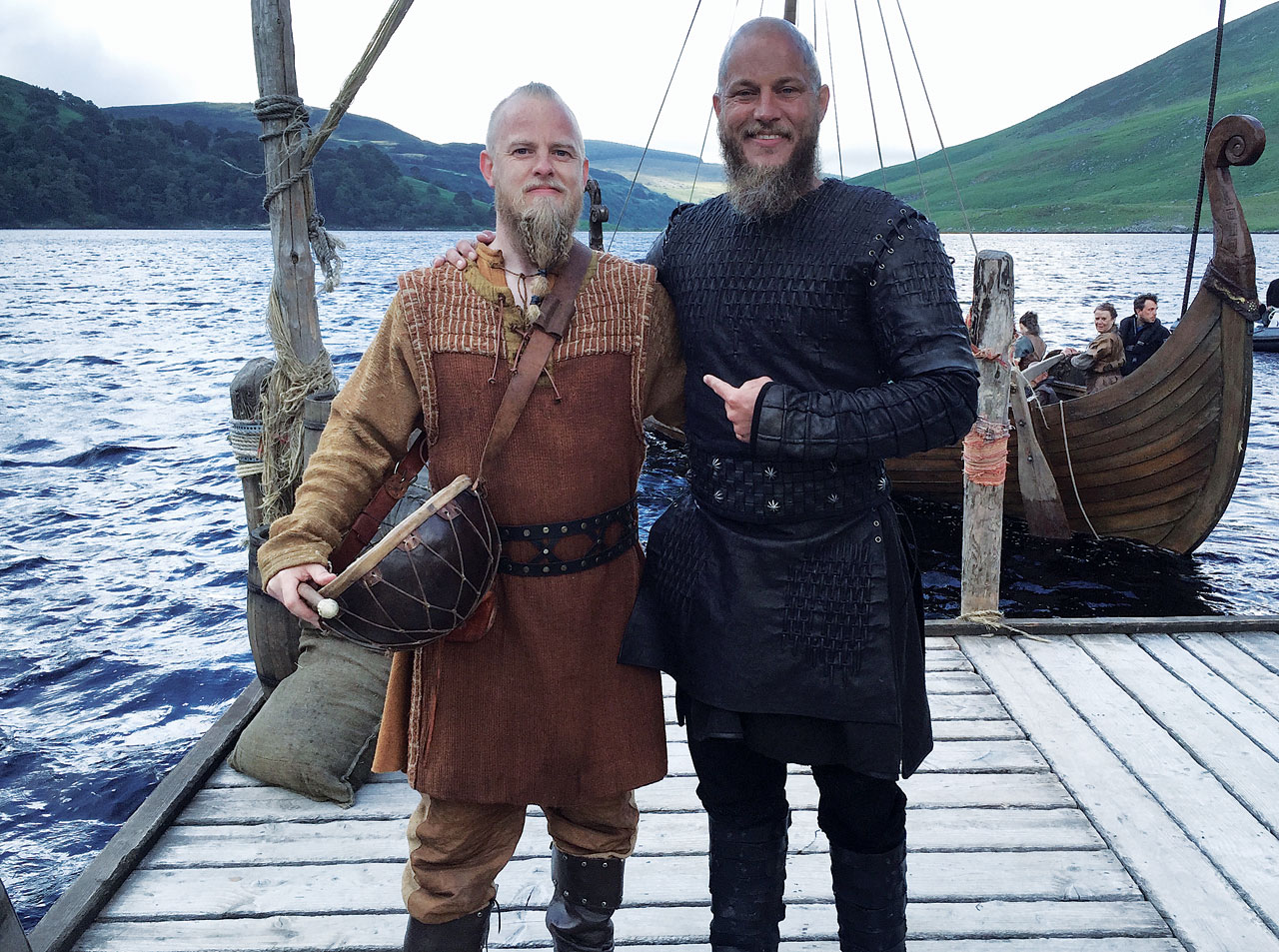
YOUR SHOUT!
With their leather jerkins and tunics and myriad of strange instruments fashioned from animal pelts, Warduna certainly appear quite prog. But are they?
“I would say that they have a progressive nature to their music but they are not prog with a capital ‘P’.” - Red X Simsey
“Precisely 77%.” - Paul Belme
“78%” - T Morley Breen
“Drawing on sources from outside the basic rock traditions is surely what makes prog prog? A lot of classic prog bands drew on folk music, and a lot of modern folk bands have the instrumental virtuosity and compositional complexity that prog fans value. As far as I’m concerned, Wardruna are as prog as anything.” - David Meadows
“I think they are pretty proggy, even given the traditional Norse instrumentation, themes and arrangements. Something about them just fits right in for me.” - Ian Hall
“Dunno really, but I do know that I really like their latest album.” - BaldB
“Prog-ish? I don’t think they would classify as prog, really, but they’re really good either way. If it means you’re gonna be writing about them, call them prog, though! I’d love to read Prog’s take on them.” - David Villanueva
“Wwwwwery!” - Melomann
“OK, so you have my official reply. Wardruna is not prog.” - Kevin Wojtasiak
“Ooooh! Good choice.” - Áine Ní Tómas
“It is! One of the best albums of 2016. It’s progressive because it’s so unique. Folk, without standards, different levels and most of all… something unexpected. Under this definition it can be!” - Eleni Liverakou Eriksson
“One of my favourite bands! Yeah I reckon you can say they are pretty proggy. Trying to make folk music from a time where nothing was written down, adding modern elements and making it their own… I’m going to have to go stick them on now.” - Jonathan Scott
“Never heard of them!” - Ed Bagley
“All Scandinavian bands are prog! Excellent stuff!” - Mike Burgess
“Why do you always write about these bands no one’s ever heard of?” - Tom Dickinson
“Love them. They certainly prog my world.” - Christine Gillis
Wardruna live review - Union Chapel, London
Norse code: how Wardruna's runic trilogy transformed Norway's musical landscape
Wardruna's Einar Selvik reveals the roots of his Norse awakening
